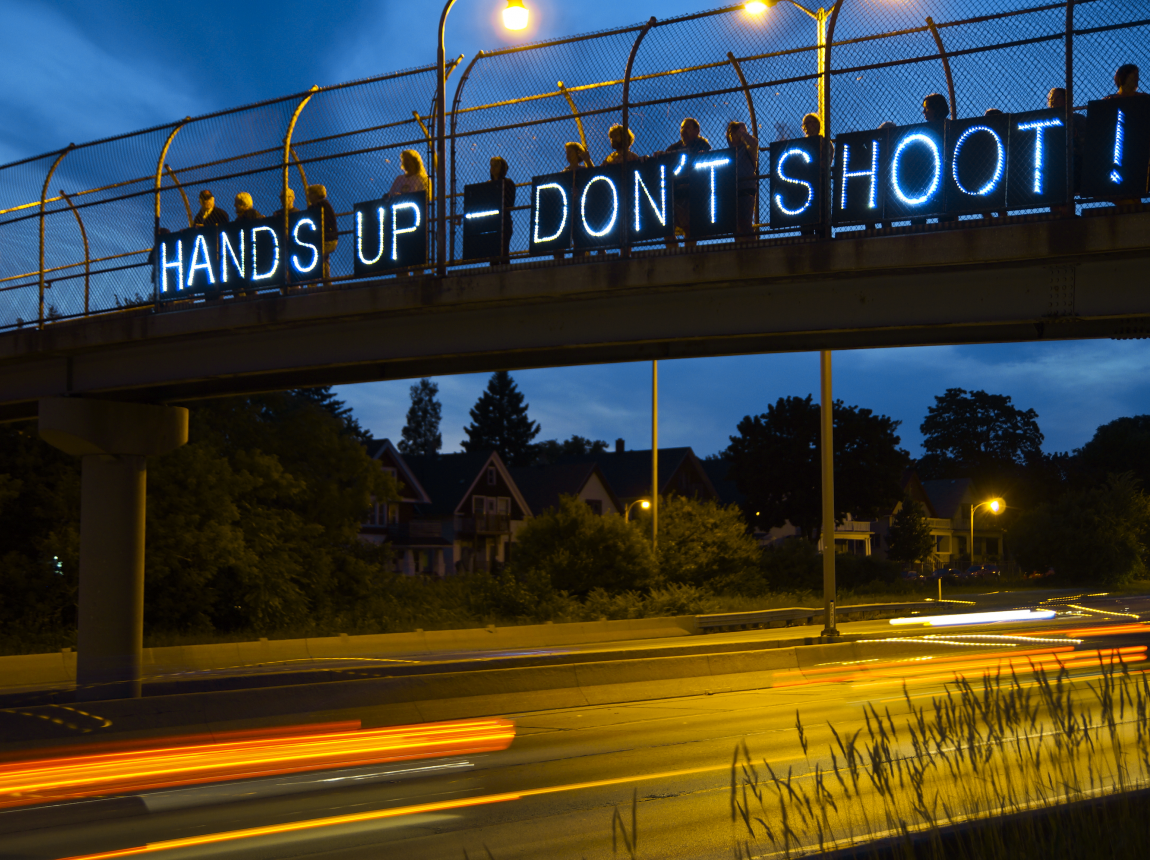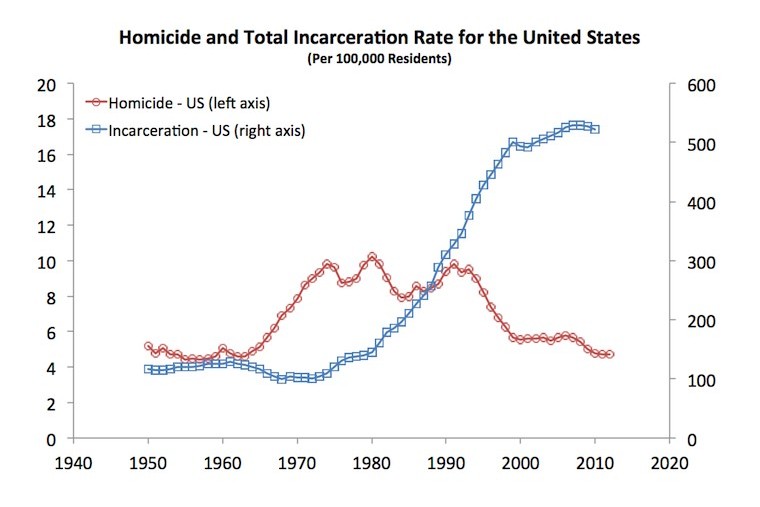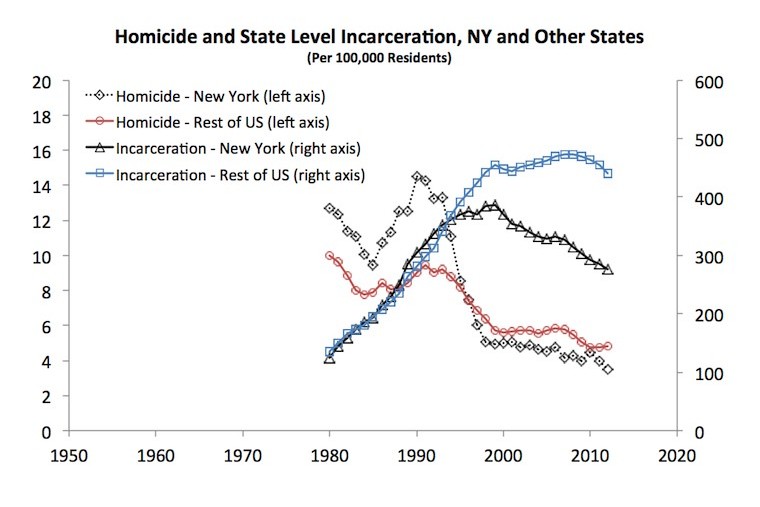Related

Oct 08,2014
Police & Community Relationships of Trust
An Interview with Robert Wasserman on Ferguson & NYC
by
The homicide rate in the United States is now back down to levels that prevailed in the 1950s. (See Figure 1.) The incarceration rate has peaked, but remains extremely high compared to the rate we saw then and the rate we see now in other countries. The new policy challenge is to find a way keep crime down while reducing the staggering social costs implied by our current incarceration rate.
In a recent paper that looks back on the history of thought concerning crime (the latest Marron Institute working paper), Mark Kleiman reframes the basic question that lies at the heart of this policy challenge. Instead of asking whether all types of punishment deter crime, we should ask instead which types of punishment deter crime.

Drawing on a range of evidence, Kleiman points to a clear answer. Punishment will have a larger deterrent effect if it is closer to the ideal of Swift, Certain and Fair (SCF). Making a punishment more severe, typically by increasing the length of a prison sentence, may add only a small amount of additional deterrence, or perhaps no additional deterrence at all. Longer sentences might reduce crime only by incarcerating people.
This suggests that the trends we have seen in the last coupe of decades, a decrease in the crime rate and an increase in the incarceration rate, are a sign that we are relying too much on severe punishments and not enough on SCF punishments. Were we to shift toward more swift and certain punishments, holding severity constant, the increase in the deterrent effect could reduce the crime rate and thereby reduce the incarceration rate. If the deterrent effect is large enough, we could even reduce the severity of the punishments. This combined response is particularly promising because an increase in the severity of punishment inevitably pushes the criminal justice system away from the SCF ideal. This effect operates at all levels of severity, but is most obvious in the extreme case of capital punishment. Any reasonable system of justice will be slow and cautious about imposing a penalty that is so severe.
If a strategy based on swifter, more certain, and less severe punishments can reduce both the crime rate and the incarceration rate back to the levels that prevailed in the 1950s, does this mean that we should simply replicate the criminal justice system that we had then?
For Kleiman, the answer is clearly no. Criminal justice in the 1950s could be swift and certain, but it was far from fair. There was an acceptably dark side to policing of that era:
If punishment is to be effective, swiftness and certainty matter more than severity, and resource constraints, due process, and the compassion of officials make severity the enemy of swiftness and certainty. But certainty is hard to achieve because most crime is undetected, and swiftness is constrained by “the law’s delays.” Thus some unjust and unlawful police activities of the pre-Warren era might have nonetheless had important crime-control functions, and court decisions that forced lawfulness on the system may have contributed to the great crime wave. (I would add ... that official lawlessness is a toxic remedy for unofficial lawlessness, and that the process of cleaning up the system, at whatever short-term cost, was utterly necessary and remains uncompleted.)
Kleiman observes that although increases in the severity of punishment were part of our recent response to the great crime wave, at least some of the reduction in crime since 1990 is due to changes in policing that have taken us in the right direction by increasing the certainty of punishment:
Part of the revolution in policing involved holding police departments and their organizational sub-units accountable for outcomes – in particular crime rates – rather than outputs such as response times or arrests.
The data in Figure 2 highlight the recent divergence between New York and the rest of the states. (State level data are only available for recent decades and do not include incarcerations in Federal prisons.) The reduction in the incarceration rate in New York state suggests that the increased certainty that can come from better policing can indeed reduce both the crime rate and the incarceration rate. They show that public agencies can learn to do their jobs more effectively.

The challenge now is to keep increasing the certainty and swiftness of punishment even as we deepen our commitment to fairness. New York City was an early leader in metrics-based policing. It is already a leader in the move toward a lower rate of incarceration. As it shifts away from heavy reliance on Stop, Question, and Frisk, it could become the new leader in the development of policing strategies that lead to a perception, grounded in fact, that the criminal justice system delivers punishments that are not just swift and certain but fair as well.
Tile image by miss_millions via Flickr.
Please fill out the information below to receive our e-newsletter(s).
*Indicates required.